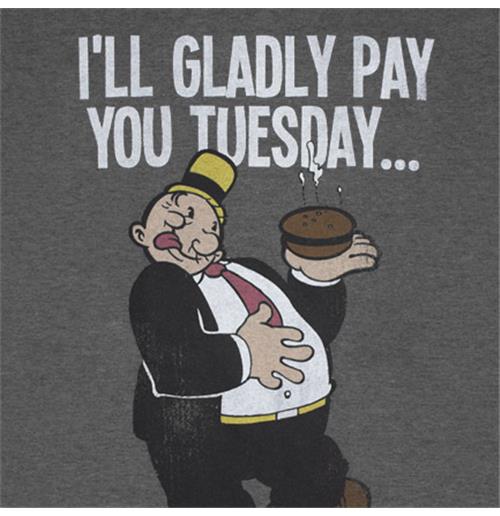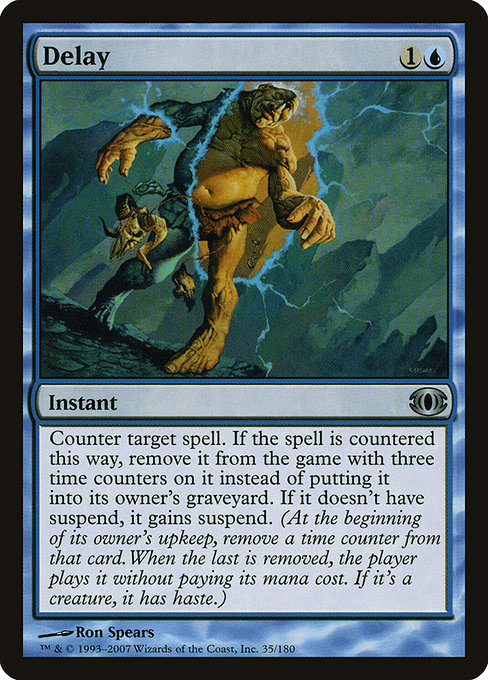Are you a Quiet Speculation member?
If not, now is a perfect time to join up! Our powerful tools, breaking-news analysis, and exclusive Discord channel will make sure you stay up to date and ahead of the curve.
Thanks to recent changes in legislature, popular selling websites such as eBay and TCGPlayer now withhold sales tax from buyers. Large vendors such as Card Kingdom have also implemented a sales tax. While a 6-10% sales tax may seem like a minimal value, the increase in purchase cost can really gouge one’s margins.
For example, oftentimes I’ll grind a 10% profit using ABUGames credit arbitrage. If ABUGames began withholding sales tax at my local tax rate of around 7%, 70% of my profits would have eroded. This would render the practice virtually pointless from a money standpoint (I still enjoy the practice and helping the community).
As a result, I’ve been relying more heavily on peer-to-peer transactions recently. My sources include Facebook, Twitter, and Discord. With the frequency of this activity increasing, I’ve run across a few dos and don’ts I wanted to share, particularly on the buying side. These are not meant to call anyone out—in fact, I have broken some of these rules for customers multiple times. But I think it’s important to share some helpful tips when buying cards from others online, especially for those who don’t buy from private individuals online that often.
Recommendation 1: Be Up Front About Shipping and Fees
It’s convenient that social media sites don’t charge fees to use their platform to transact Magic cards. Facebook, Twitter, and Discord are all convenient platforms to use, making them attractive venues for pedaling wares.
Unfortunately, the fee structure for the most popular payment method—PayPal—is often less understood. Depending on how payments are sent, they can incur a fee. Currency conversion also merits a PayPal fee, and these fees can begin to add up. As in the case of eBay and TCGPlayer, these fees are incurred by the seller receiving the payment.
When I sell to peers and receive these PayPal payments, I expect my account to increase by the price agreed upon. Once the payment hits my account, I receive an alert in email and on my phone. However, that alert displays the price paid by the buyer. If there’s a fee due to the way PayPal was used, I can only see it if I log into my account to view the transaction.
I usually don’t mind if the payment incurs a fee. But my recommendation to buyers is to be 100% clear if the desired method of PayPal payment will incur a fee or not. I may be willing to eat the fee, or I may ask to share that cost with the buyer. Either way, I want to know in advance how that fee will be covered before a transaction is executed. This up-front transparency will eliminate any surprises when I check my account to ensure the agreed-upon payment is credited to my account.
Recommendation 2: Be Up-Front about Delayed Payments
Sometimes I’ll post a card for sale, someone will message me about it, and we’ll negotiate back and forth a bit. I’m always open to reasonable offers, and I’m often a motivated seller. My desire for liquidity is your opportunity to get a great deal on a card. This back and forth is perfectly acceptable.
What I don’t appreciate, however, is when after the negotiation takes place and a price is agreed upon, the prospective buyer asks if they can pay at some point in the near future. This reminds me of the Popeye character Wimpy, who always wanted to pay for his hamburgers next Tuesday.
If you need to wait for payday or some influx of cash to your account, I ask that you please be transparent about this at the very beginning. Otherwise, in these scenarios the seller incurs some hidden risks. What if the buyer backs down? What if the card's price drops due to reprint or spoiling of some new card? These are possibilities that suddenly make the deal much more awkward.
By being upfront and stating your intention to pay on a future day makes it crystal clear to me as a seller that if I accept an offer, that payment won’t come for some time. Sometimes that’s OK, but other times if a card is very easy to sell, I may not want to wait. But being transparent is the best way to avoid a very awkward situation in which a price is agreed upon, and then I have to wait days to complete the transaction I had intended to complete immediately.
I recognize that in reality, people don’t always have funds readily available in their PayPal accounts. I can be flexible. But please don’t spring the surprise news at the very end of negotiation—it just leaves a sour taste in my mouth.
Recommendation 3: Don’t Make Offers Below Buylist
It may seem obvious to some, but you would be surprised how many times I am selling a card and someone offers me a number below Card Kingdom’s or ABUGames’ buylist. While I don’t expect everyone to know every vendor’s buylist price, you really need to be lowballing to make such an offer sometimes.
I always price my cards below TCG low (by condition) when I’m trying to make a sale. Sometimes that may not be a competitive enough price, but I don’t expect offers more than 10-20% below my asking price all the same. Other reputable sellers on social media also consistently price their cards to sell quickly. Coming in with an offer 30+% below asking price can therefore be insulting.
I try not to take offense to such lowball offers—I know it’s not a personal attack on my intelligence. But it could reflect poorly on the buyer, and can be perceived as an insult. If you’re interested in purchasing a card from someone and you want to make a low offer, please do a quick check online to make sure you’re not offering below vendor buy prices. That's all I ask. Maybe there's still good justification for proceeding with the lower offer, in which case sharing the data you've uncovered in your research could help strengthen your rationale for the lower offer.
Trader Tools is a handy tool to make that quick check: if your offer is below the buy price that shows up on that site, you need to make sure you consider your offer once more before sending it to the seller. Sometimes condition, past relationships, or other factors make such a low offer acceptable. But if this exception isn’t obvious, please think twice before clicking “send.”
Recommendation 4: Don’t Throw Away Envelopes Right Away
I’m usually pretty cheap (this should come as no surprise). If I can save a few bucks by buying one copy of a card from four sellers instead of four copies from one seller, I will do so despite the minor inconvenience.
When I do this, it sometimes gets confusing when the cards arrive in the mail—who shipped me which copy? If I only receive three and the fourth gets lost in the mail, who is the seller I need to contact? Or if one arrives damaged, I need to know who shipped that copy.
Some sellers don’t include an invoice (this would be a corollary recommendation—always include an identifier within the envelope if you’re selling), so the only way to identify them is by referencing the return address on the envelope. That’s why I always keep envelopes until I’ve confirmed the seller. If you tear open your packages and immediately toss the envelope, you may run into a sticky situation whereby a copy had not arrived, and you don’t know who the offending seller is.
If you’re the seller, include an invoice or something that identifies you as the seller. If you’re the buyer, keep all materials the card came with until you know who sold you that particular copy. It will avoid potential confusion and ensure the sellers get the credit they deserve for that shipment, whether it be positive or negative feedback.
Wrapping It Up
Selling peer-to-peer using social media is an attractive way to exchange Magic cards. By avoiding fees, a lower price can be offered to buyers while sellers can achieve greater liquidity.
However, sometimes these peer-to-peer transactions bring along with them some headache. Sometimes that headache is worthwhile because it means I can sell at a higher price, or sell more quickly. Other times, I’d rather just ship to a buylist to avoid the hassle. It’s truly case-dependent.
To facilitate the smoothest transactions possible, I presented four recommendations on how to be most up-front and transparent.
First, be crystal clear on payment method and who will incur the fees. No one likes getting paid less than what they agreed upon because of an unexpected fee. Second, be very up-front about your payment timeline. If you can’t send payment over for a few days, that may be fine. But don’t complete negotiations and then spring that news upon me at the very end—it leaves a sour taste in my mouth. (On the other hand, if you can pay immediately, make that intention clear as well because I may accept a slightly lower offer if I know the cash is nearly in-hand).
Third, please try to avoid making lowball offers below vendor buylists. I don’t expect buyers to know the buylist price of every card offered by every vendor. Because I try to make my prices competitive, I just ask that you double-check if you’re about to make an offer more than 20% lower than my asking price. It may still be fine, and I may still be desperate enough to accept. But if your number is less than Card Kingdom’s number, you’re not likely going to get a yes.
Lastly, always keep the materials a card was shipped within until you definitively confirmed who sent the cards. This is good practice for situations where you ordered multiple copies of a card from various sellers. And if you’re a seller, by that same token, try to include an identifier within the envelope so buyers know who shipped them the card(s). It eliminates a potential issue should a card not arrive, or arrive damaged. This happened to me once, and I had to use the return addresses on the envelopes to confirm which seller’s card hadn’t arrived so I could open a case and pursue a refund.
These practices aren’t mandatory, but they’re helpful to make peer-to-peer transactions as smooth and pain-free as possible. And doing this will motivate me to offer more cards for sale via social media rather than shipping to buylists, benefiting the player base rather than the major vendors.
…
Sigbits
- A basic land now shows up on the top of Card Kingdom’s hotlist. What basic land could possibly have a buy price of $490? None other than the Guru Island, of course! I haven’t tracked Guru land prices, so I don’t know if this is a good number or not. But it’s just really interesting to see a basic land top the list!
- Second on the list is another ubiquitous card: Lightning Bolt. At one point they had Beta copies on their hotlist, but now only the Judge Promo version is, with a $295 buy price. This foil continues to be one of the most valuable versions of the red common, though I prefer Beta copies myself.
- The only Throne of Eldraine card to show up on the first page of Card Kingdom’s hotlist (meaning it’s in high demand and has a high enough buy price) is the extended art version of Once Upon a Time. The special printing of the green instant carries a $47.50 buy price, currently. These special card versions are going to make for interesting study as their prices unfold over time.









